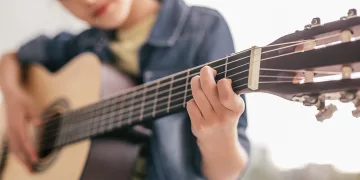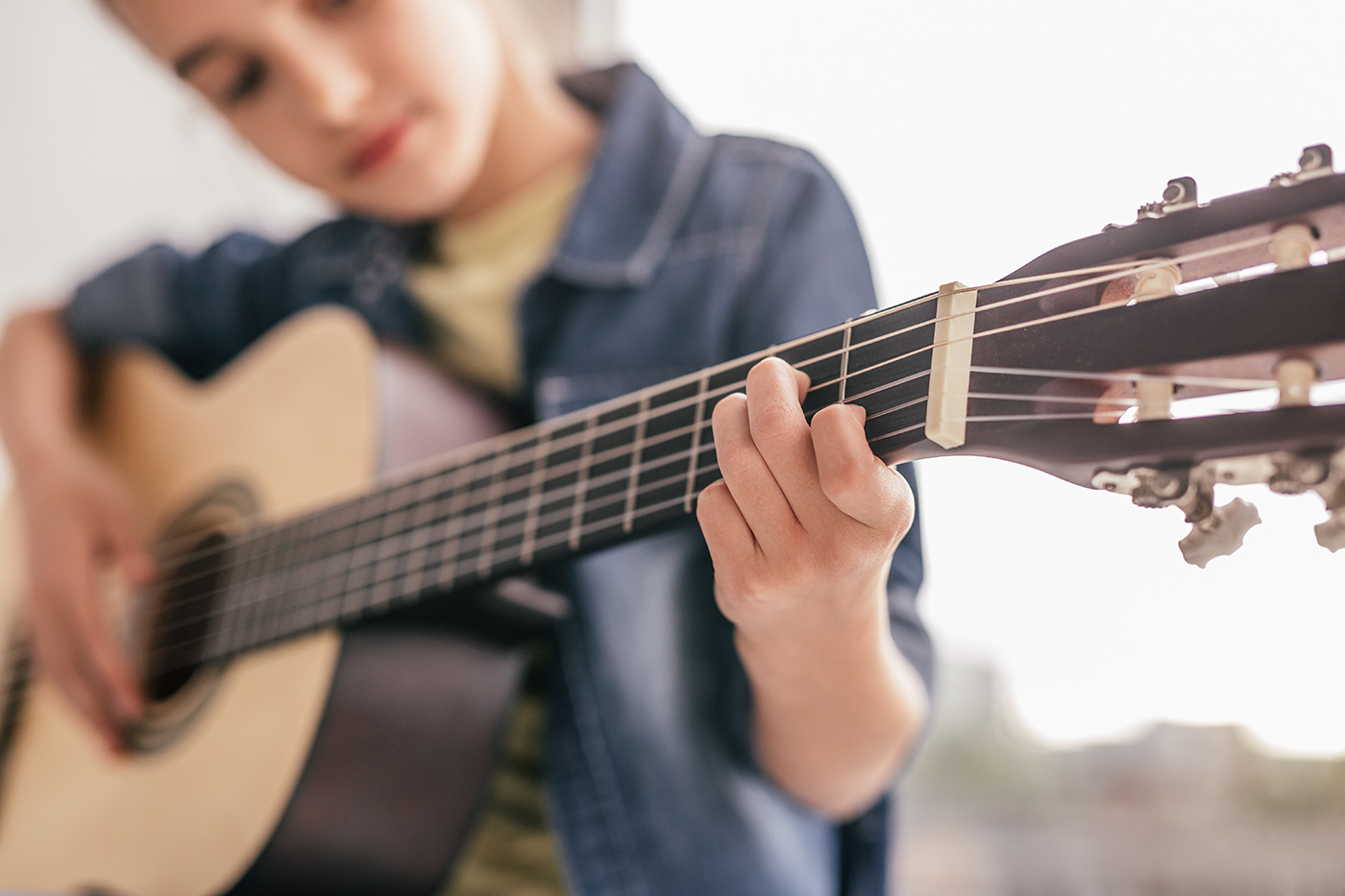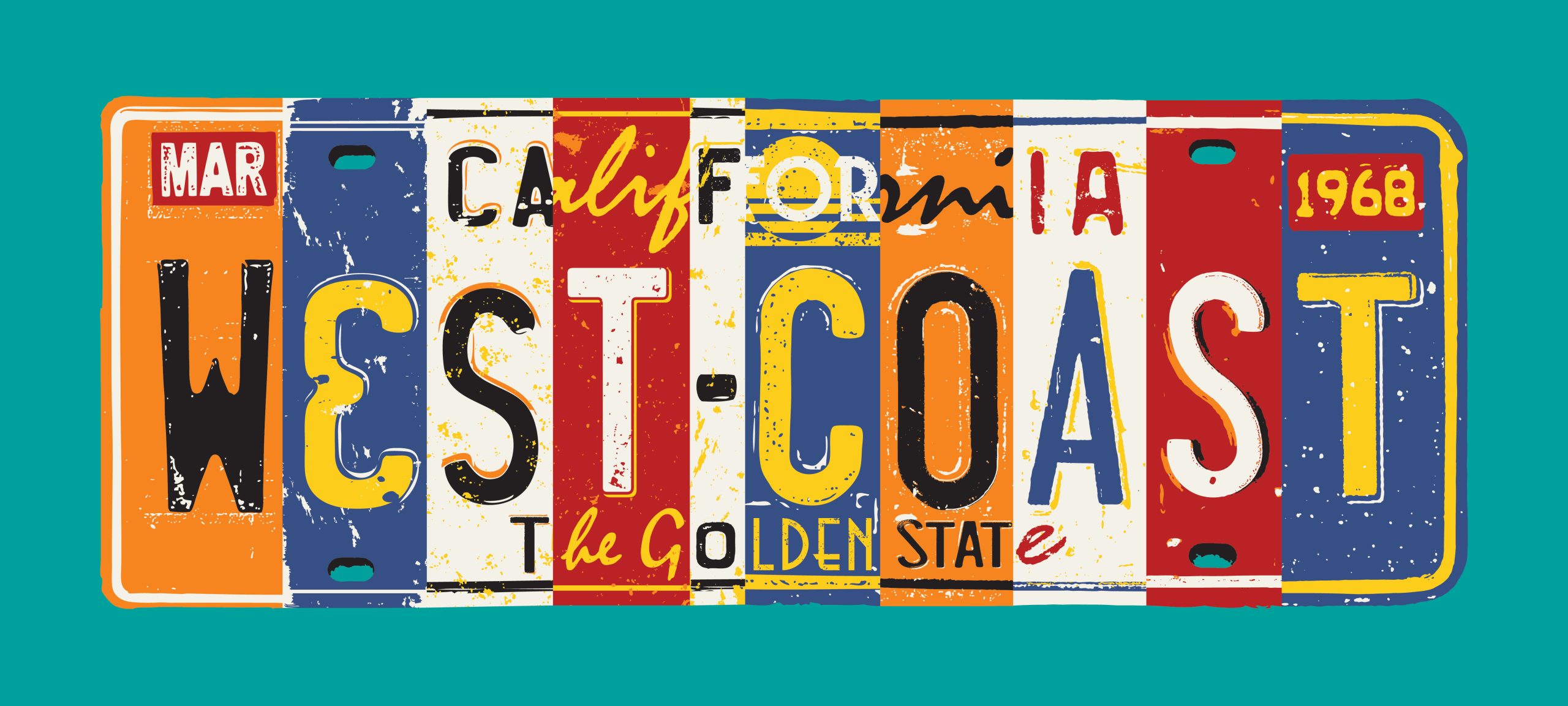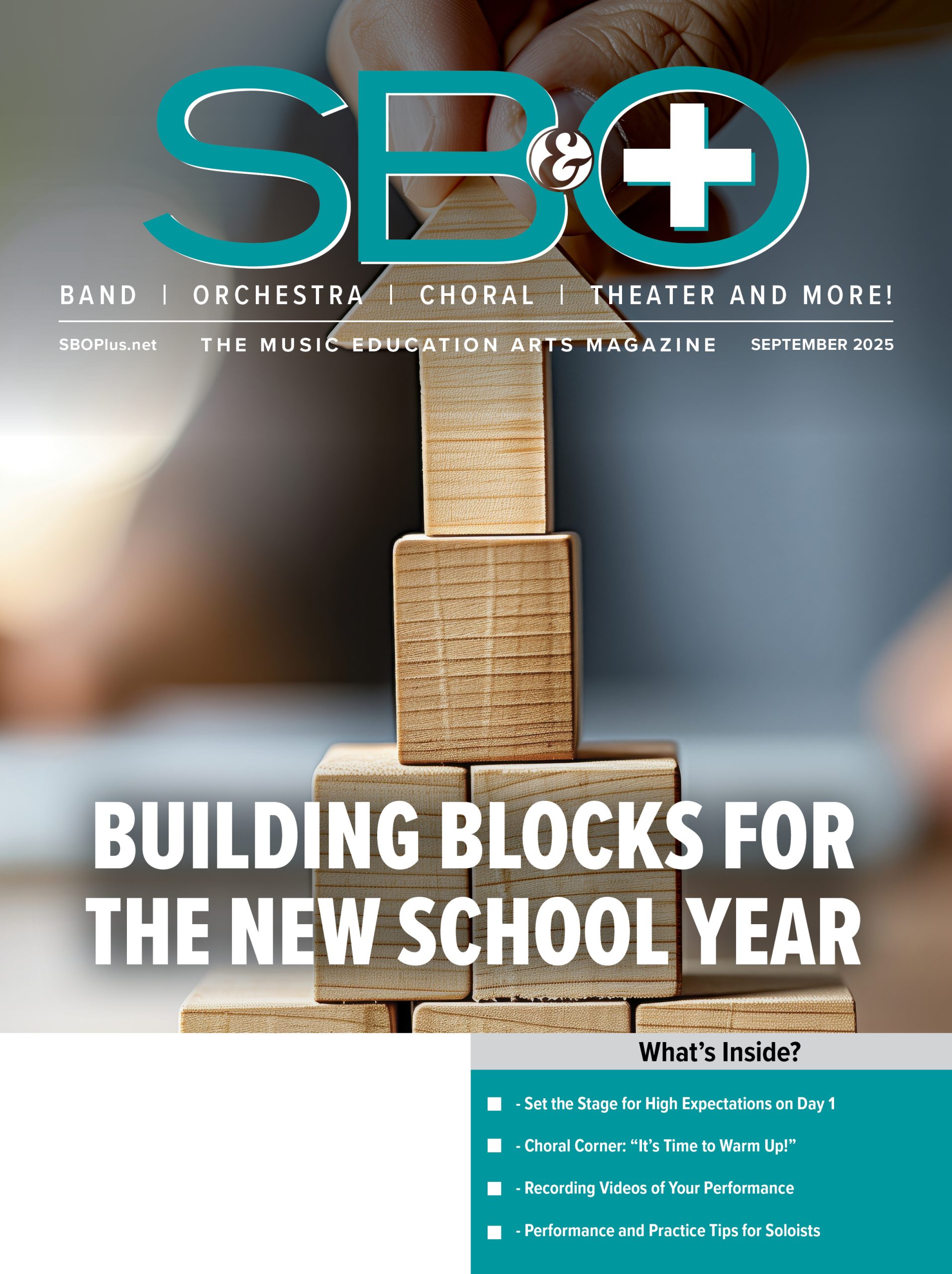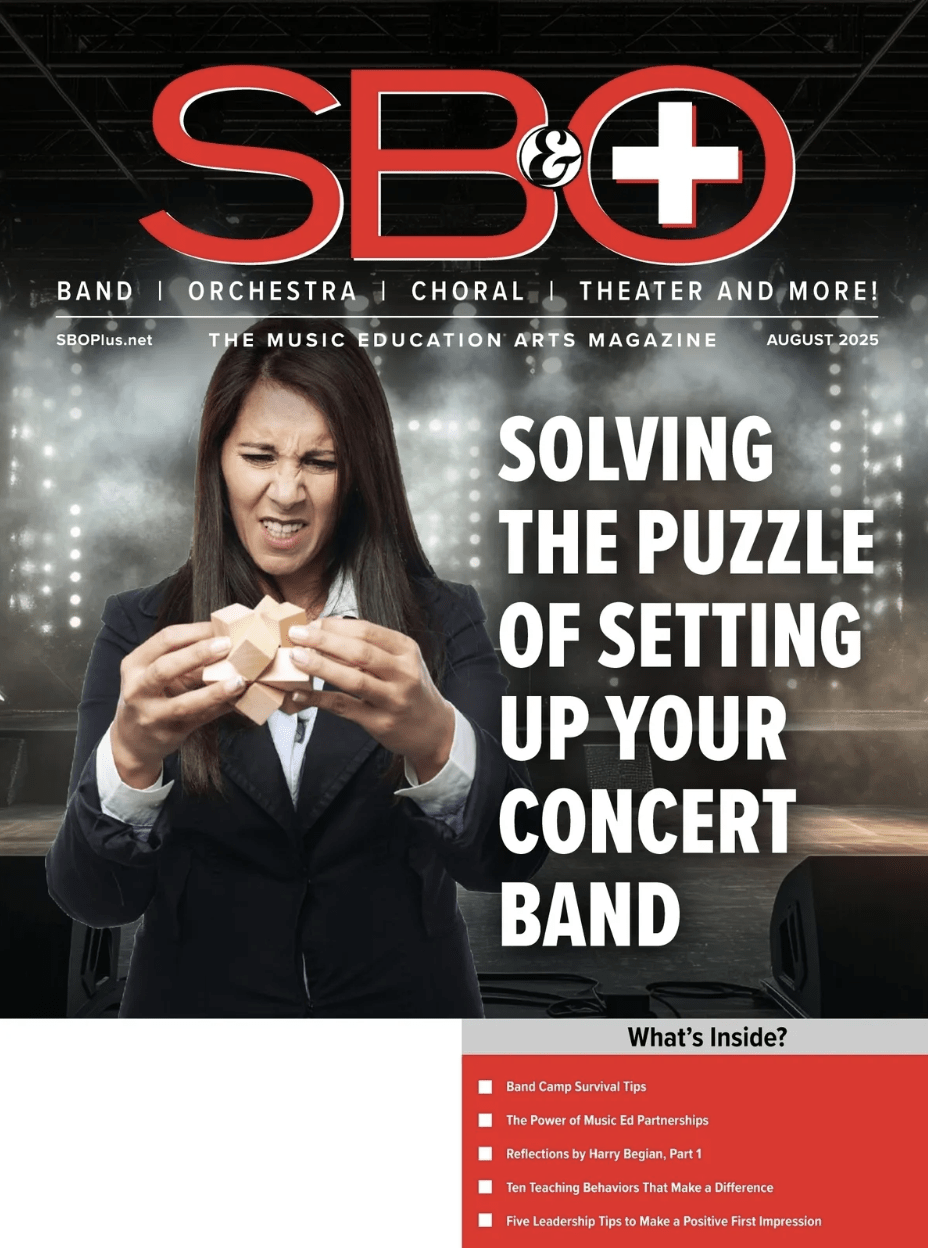By Dr. Scott Burstein
If you have a guitar class or modern band that uses student-selected pop songs, there is a good chance this has happened to you: there is some new song on the radio they all want to learn, and it’s simple, just a few chords, but there is no way to avoid a tricky chord they don’t know yet, something beyond the basic eight open chords. Well, here are three different tips for getting past those roadblocks.
Recently I saw a group of high school students playing “Just Like Heaven” by The Cure (also what I like to call the happiest song by the saddest band), and it is by and large a perfect song for growing players – relatively simple form, just 5 chords throughout, and lots of opportunity for layering parts, from the guitar riff to the simple keys and piano melodies. The problem? Two of those chords are a B minor and an F# minor. Here are solutions for getting around them:
- The simple top strings barre. On guitar we tend to think of strumming all the strings and these large chord sounds, but often it’s more characteristic to think of simple triads like you might on keys. If you lay down your first finger on the top three strings (G-B-E), you have a minor triad that is moveable anywhere on the neck. The root is on string 1, so playing it on the 2nd fret will give you the needed F# minor chord.
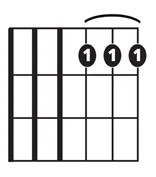
While this is a simple solution, it can be jarring to move from a full open chord to a sudden three string one, but still a good mid-solution while they build strength to play a fuller chord.
- Relative substitutions. If you have a larger group or a bass player, this is an ideal trick for keeping things moving. Take that B minor chord and think of the relative major chord (up 3 half-steps and two letter names) and you get a D major chord. If your guitarists play a D chord there while the bassist, keyboards or other guitarists play a low B in the bass, you end up with a Bm7th chord, which works well. You can do a similar solution on the F#m by playing an A major chord over an F#. Think of it this way, the Bm7 is just a B D F# A, where you are only playing the B in other instruments. Once again, this isn’t a perfect solution, the largest drawback is when students practice or perform by themselves.
 ??? =
??? =  with B in other instruments
with B in other instruments
- Power Chords are your friend. If you aren’t familiar with power chords, they refer to a chord that doesn’t have a 3rd, particularly a root, fifth, and often another root on top.
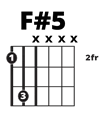
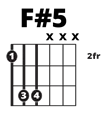
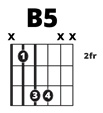

You can play them with just the root and fifth, or the octave. You can play them on strings 6-4 or 5-3, the note you play with your first finger is the root. They definitely have a different sound, but to keep things uniform, you can actually play all the chords of the song using power chords, even open chords like A and E.
While these are great tricks for getting through difficult parts of songs with harder chords, they are typically used on the road toward mastering barre chords, probably the biggest stumbling block for beginning guitarists. In my experience if your students are excited to learn, they will push themselves and go beyond what you thought possible! I have seen a class of grade 3-4 elementary students learn to play barre chords in the first few weeks. How? The teacher had them work on a song where they could play everything simply from the few open chords they have already learned except one B chord. He first offered them the solution of just playing a hybrid B of barring strings 5 through 1 with their first finger (resulting in a quasi-B9 sound), and soon the students were so excited to get it right, they added the rest of the fingers for the chord.
This is why giving students a voice in their education can be such an important tool. When they see the music they know and love reflected in their classes, they feel empowered and anxious to push themselves. As a teacher of guitar and popular music, you can find lots of solutions like these to make sure you can help them on this path when the music they want to play might be a bit out of their reach.
Dr. Scott Burstein is the Director of Strategic Initiatives for the non-profit Music Will. For more free resources, check out https://jamzone.musicwill.org/

